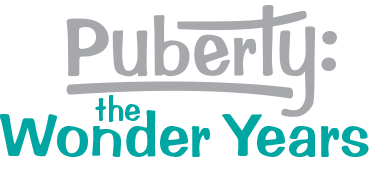Sexual Health
According to the World Health Organization (WHO), “Sexual health is a state of physical, emotional, mental and social well-being in relation to sexuality; it is not merely the absence of disease, dysfunction or infirmity.” This means that puberty education in Australia must include multiple facets, not just physical changes.
Puberty education is a subset of the larger topic of sex education, which is often called educación sexual integral (ESI) in Mexican schools. Puberty education focuses on the developmental stages that happen as children begin puberty, most often in the primaria grades 4 to 7.
Sex Education in Mexican Schools
In Mexico, sex education is under the jurisdiction of the Mexican Secretariat of Public Education (Secretaría de Educación Pública,[SEP] also called the National Ministry of Education) which is a federal government authority with responsibility for overseeing the development and implementation of national educational policy and school standards in Mexico. Article 3 of Mexico’s Constitution calls for free, mandatory, and secular education, including sexuality and reproductive health.
Most students attend public schools that are funded nationally or by states, but private schools are popular with wealthier families. Either way, the basic education provided in public schools and in private educational institutions, known in Mexico as “escuelas particulares,” must follow the principles set in Article 3. Textbooks from various publishers are approved by the CONALITEG (Mexico’s National Commission for Free Textbooks) for use in the public schools. [1] Some sex education has been included in textbooks for students in grade five and higher.
What Young People Say
- 60% say they had access to materials about sexual and reproductive health.
- 85% report that their textbooks include that information.
- Their knowledge of sex education was too basic, focusing on biology or sex instead of relationships.
- They are interested in learning about kissing, orgasms, masturbation, and condom use. [2]
Challenges for Sex Education in Mexico
Challenges include the following:
- Decentralized government: With 31 states and the capitol, a separate entity, great variability in the quality and fidelity with which sex education has been implemented occurs from state to state. This is related to the heterogeneous characteristics, political interests, and levels of influence of supporters and opposition in each state. [3]
- Cultural and religious obstacles: Organized opposition to sex education in schools increased in 2016 when The National Parents Union (UNPF), the National Catholic Bishops’ Conference, and Evangelical groups united to form the National Front for the Family (Frente Nacional por la Familia). Their opposition campaign was called “No te Metas con mis Hijos” (“Do not mess with my children”), reflecting their accusations that the State was violating the “rights of the parents” to educate their children. [4],[5]
- Lack of training for educators: Many teachers lack the comfort, knowledge, and skills needed to teach ESI.
Support for Sex Education in Mexico
Mexico has a large and growing population of young people, with more than half of the country’s population under the age of 30. Since this age group is at risk of unintended pregnancy and sexually transmitted infections (STIs) if they do not have access to accurate information about sex and sexuality, sex education is a critical issue.
These are some sources of support for sex education:
- Prevention of teenage pregnancies: In Latin America, 18% of all women giving birth are younger than 19. National leadership views sex education as a strategy for reducing pregnancy among younger people. [6]
- MEXFAM commitment: With the goal of promoting gender equality and empowerment of women and girls, they committed to providing scientific and secular sexuality education in schools. [7]
- Mexican Institute for Family and Population Research (IMIFAP): IMIFAP has been working for wider provision of school-based sexuality education. [8]
- Mexican Association for Sexual Health (AMSSAC) provides teacher training.
For more information about…
…teaching sex education in schools, hopefully including sexual stages of development, check out these resources:
- International technical guidance on sexuality education: an evidence-informed approach, UNESCO, 2018
- Sexual and reproductive health outcomes are positively associated with comprehensive sexual education exposure in Mexican high-school students (2018)
[1] The new official contents of sex education in Mexico
[2] Sex Education Battleground in Mexico
[3] Evolution and Resistance to Sexuality Education in Mexico
[4] Mexico wants to prevent teenage pregnancies
[5] Evolution and Resistance to Sexuality Education in Mexico
[6] Mexico wants to prevent teenage pregnancies
[7] Mexico is including comprehensive sexuality education in the formal basic education curriculum
[8] Quietly Working for School-Based Sexuality Education in Mexico: Strategies for Advocacy


